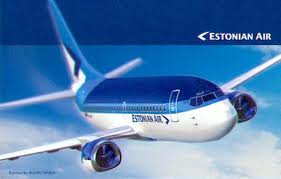Airbus's decision last week to launch a passenger-to-freighter
conversion programme for its A330 twinjet was long overdue. The
airframer's own global market forecast for freighters, issued last year,
predicts demand for a total of 2,731 cargo aircraft over the next 20
years, split between 834 new-builds and 1,897 conversions.
Yet
until last week's announcement, Airbus had addressed that demand solely
with its new-build A330-200F. Although that programme has arguably
under-performed, accumulating just 69 orders to-date, Airbus believes
that section of the market still holds considerable sales potential.
Again,
the global market forecast offers a clue to the airframer's thinking.
It predicts that most of the growth in that 20-year period will come in
the mid-size freighter market occupied by the A330. That equates to a
total of 1,327 units, with potential for around 900 conversions
according to the forecast.
Demand will be driven both by growth in
the cargo market and the need to replace older aircraft. In fact,
Airbus says around 570 aircraft will need to be replaced in the mid-size
sector alone.
Likely candidates for replacement by the A330 P2F
are the Boeing MD-10F/McDonnell Douglas DC-10, and at the lighter end,
the Airbus A300 and A310 freighters, all of which still have a
significant global presence. Flightglobal's Ascend Online database lists
81 MD-10Fs in active service, 198 A300 freighters and 54 A310
freighters. The vast majority of the three types are operated by US
express carrier FedEx.
Closer analysis of its fleet using Ascend shows
the Memphis company operating a total of 73 MD-10Fs - both -10Fs and
-30Fs - with an average age of over 33 years. There are also substantial
numbers of A300Fs (71) and A310Fs (45) in its fleet, with an average
age of 19.5 and 25.5 years, respectively.
Boeing lists the
MD-10-30F as able to carry a payload of 79.4t (175,000lb) over 3,305nm
(6,115km). Although no payload-range figures are yet available for the
P2F programme, Airbus gives the line-build -200F's maximum payload as
70t over 3,200nm.
Clearly the P2F will not be a like-for-like
replacement for the MD-10, but Airbus suggests the type's fuel
efficiency more than compensates for what it loses in payload and range.
Assuming a fuel cost of $100 and above per barrel, the -200F model need
only have utilization of 2,200h per year to compensate for its $211.5
million acquisition cost against the Boeing, claims Airbus.
The
necessary utilization would slide even further in Airbus's favor with a
P2F aircraft. Airbus has not disclosed a list price for the conversion,
however early estimates put a total cost at around $30 million. Early
-300 models, produced between 1994 and 1997, are valued at $22.5-$25
million, according to Ascend. Newer aircraft are worth anywhere between
$41.7 million and $58.95 million for the higher-gross weight -300 and
$38.5-$51 million for the -200.
Ascend analyst Chris Seymour puts
the optimum age for freighter conversion at 15 to 20 years. Early A330
models sit comfortably in that age range, but Seymour says the success
of the programme rests partly on the availability of "feedstock"
aircraft ripe for conversion. Numbers are plentiful: Ascend lists a
total operational A330 fleet of 800 aircraft, split almost equally
between the -200 and -300. And with the first P2F conversion not due to
roll out until 2016, Seymour predicts even greater feedstock
availability as airlines de-fleet in favor of new models.
Lessor
Guggenheim Aviation Partners is active in the cargo sector, for instance
leasing three 777Fs to European operator TNT Airways. Steve Rimmer,
chief executive officer, says it is "intrigued by the programme" but
stresses it is too early to form a firm opinion.
He says:
"Feedstock for conversions and the increasing focus on age limitations
will need some consideration. Payload range will be key.
"The
production freighter has been slow in gaining momentum and that makes us
a little cautious. However, it's definitely on our radar and we will be
spending some time reviewing it when there are fuller details
available."
One airline viewed as a potential launch customer for
the conversion is Qatar Airways. The Doha-based airline has 29 A330-200
and -300s in service and, with the latter about to start being replaced
by Boeing 787s, it has been urging Airbus to launch an A330 cargo
conversion programme. Airline chief executive Akbar Al Baker has
previously said that the converted A330s would be operated either by
Qatar Airways' expanding cargo division or placed with its leasing
division for placement with other freight operators.
One reason
for Airbus's previous reluctance to launch the P2F programme was the
fear of cannibalising sales prospects for the -200F. However, Seymour
argues the two products are "complementary", citing their different
mission profiles and the commonality between the types.
It is also
worth noting that the existence of a P2F conversion programme has not
particularly hampered sales prospects for Boeing's 767-300 Freighter.
Some 35 of the converted 767s are in service and Boeing has taken a
total of 111 orders for the 767-300F, with 46 still to be delivered,
including to FedEx and fellow US parcel carrier UPS.
Flight Global



















